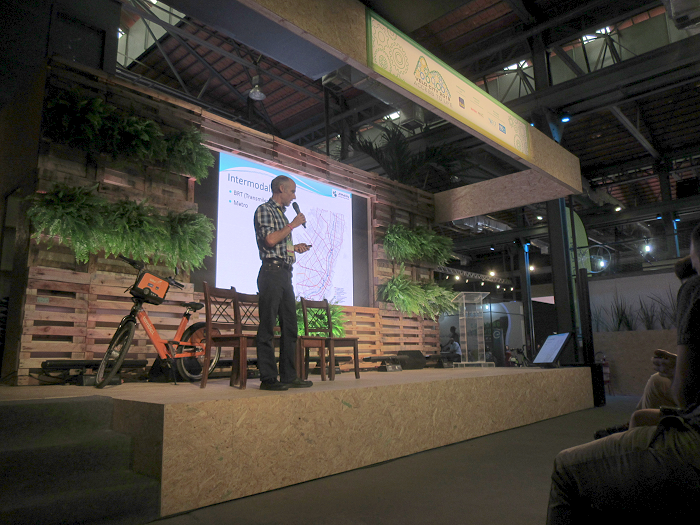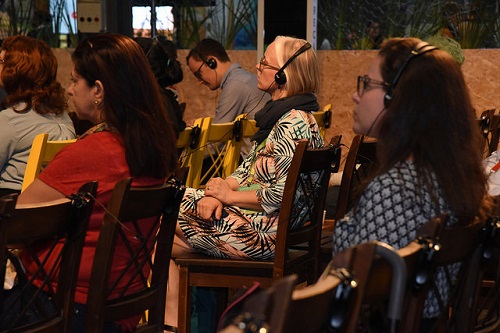
Velo-city day 3: Inclusive Infrastructure
Infrastructure can be a promoter of social inclusion, generating accessibility and equality – was the main message of the “Inclusive Infrastructure” session.
Bernardo Baranda, director of ITDP Mexico presented examples of pedestrian and cyclist friendly infrastructure built in the last 10 years in Mexico City – home zone streets, cycle lanes, redesign of intersections. A lot can be gained by making oversized intersections more compact, e.g. extending sidewalks, adding dividing verges or islands. It reduces both the car speed and exposure of pedestrian and cyclists.

Bogotá is one of the leading cycling cities in Latin America with 400 km of cycling infrastructure and about 6% of trips by bike. To further increase bicycle use, the city of Bogotá has launched a plan to create a 25-km long cycle highway (Ciclo-Alameda) Quinto Centenario from north to south across different social strata. Jeroen Buis (JB Mobility) presented how the general vision of green, coherent, safe and inclusive corridor translated into specific design requirements for infrastructure type (cycle paths, cycle streets), width, material use, route choice landscaping and street furniture. The works are planned to start in 2019.
Rafaella Basile from Cidade Ativa gave an overview of problems pedestrians face in Brazil – lack of infrastructure, insufficient width, surface quality or lack of maintenance. She stressed that insufficient pedestrian infrastructure harms the most vulnerable part of society and concluded with presenting examples of different pedestrian organisations and campaigns in Brazil.
Network/Project Involved:
Topics:
Contact the author
Recent news!
Upcoming events
Contact Us
Avenue des Arts, 7-8
Postal address: Rue de la Charité, 22
1210 Brussels, Belgium









